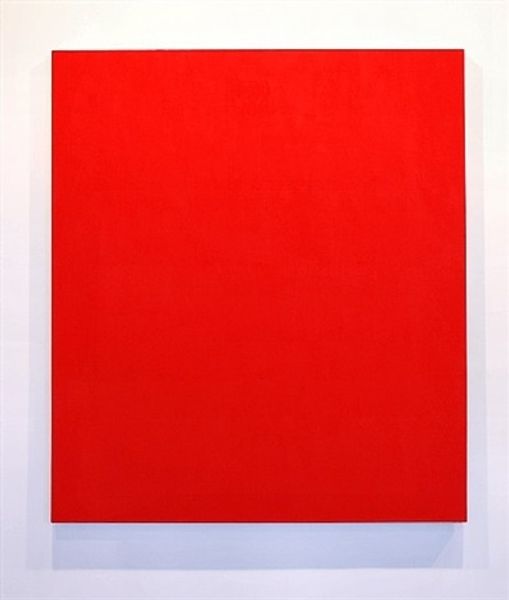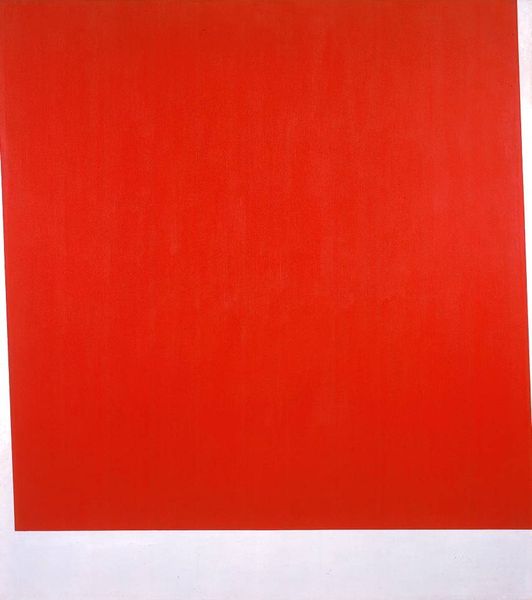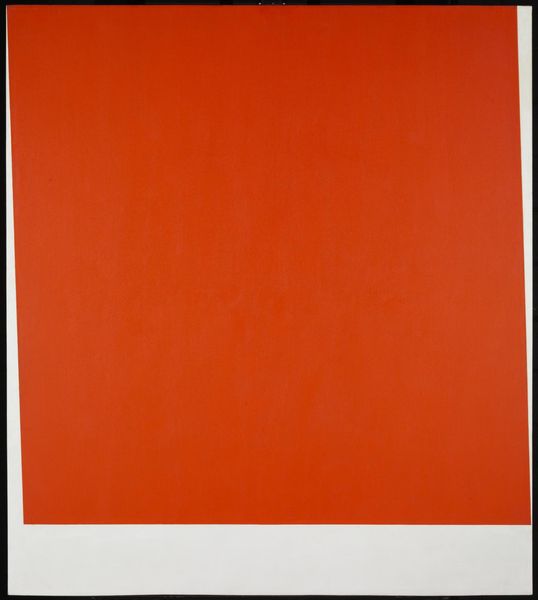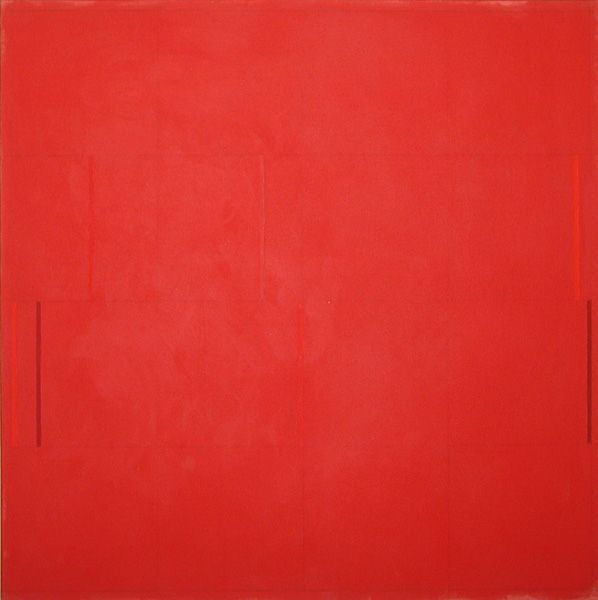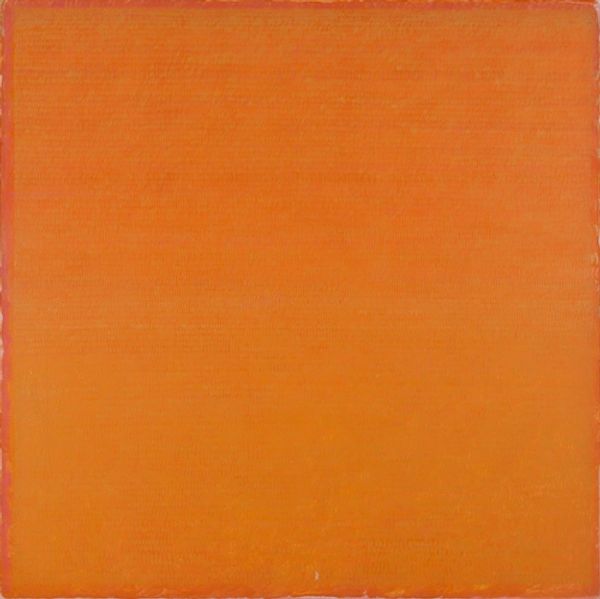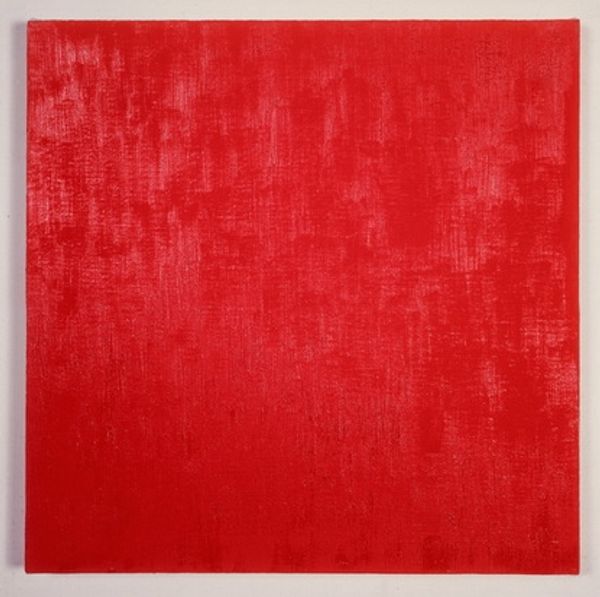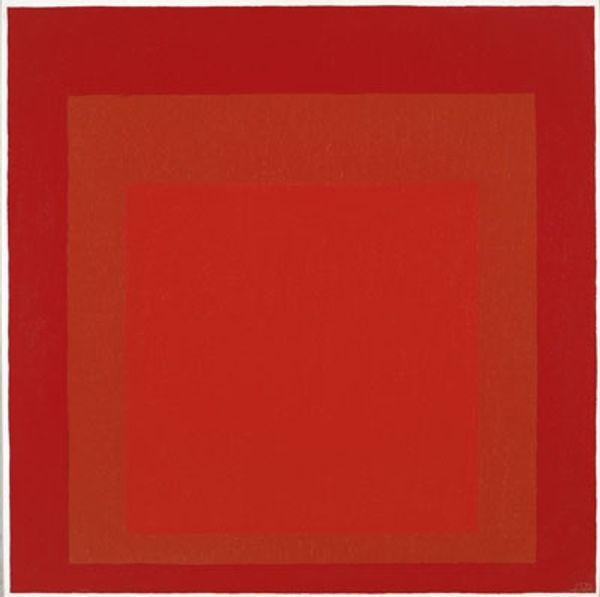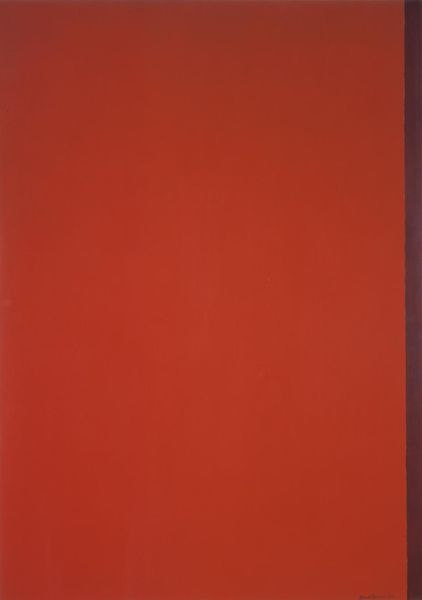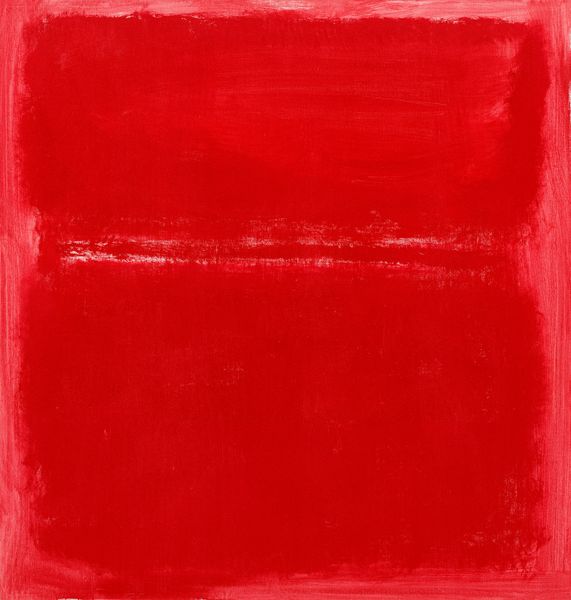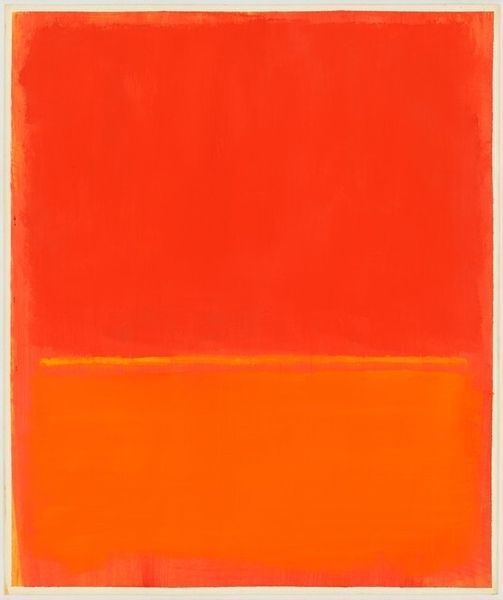
Copyright: Marcia Hafif,Fair Use
Editor: Here we have Marcia Hafif’s “Vermilion,” painted in 1994 using acrylic. It’s, well, mostly just a red square. How can we begin to appreciate such a simple work? Curator: Let's look at the material process. Acrylic paint, mass-produced. The canvas, another manufactured product. Hafif's gesture, repeated application, seemingly simple, but physically demanding. Think about the labor involved, the conscious choice to engage in this repetitive act. Does this change how you view the artwork? Editor: It makes me think about what she's trying to say through that repetitive action. Is it about the democratization of art, using readily available materials? Curator: Precisely! And what does it mean to take this everyday material, this industrial color, and elevate it to "art"? She's challenging the traditional separation of art from craft, highlighting the act of production itself. Consider the socio-economic implications: who has access to these materials? Whose labor is involved in their production? Editor: So, by focusing on the materials and the labor behind it, Hafif prompts us to think critically about consumption and value within the art world itself. Curator: Absolutely. We are encouraged to think about the historical context. Color Field painting sought to reduce painting to its essential elements, a trend rooted in a desire for purity and simplicity. But is that purity truly attainable, considering the messy realities of material production? What assumptions are challenged by this seemingly simple gesture? Editor: This has made me consider the painting in an entirely new way. It's no longer just a red square, but a commentary on the art world itself. Curator: Indeed. Looking closely at how things are made reveals power structures and opens new perspectives, it certainly changed how I appreciate Minimal art.
Comments
No comments
Be the first to comment and join the conversation on the ultimate creative platform.
